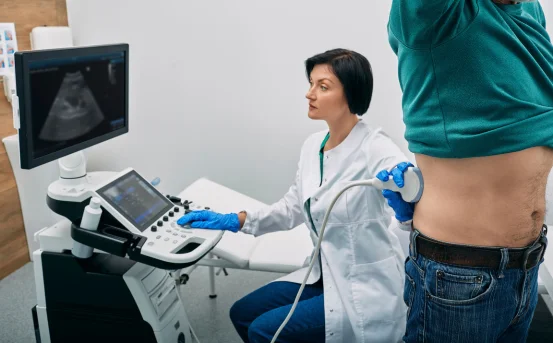Colon and rectal surgery, also known as colorectal surgery, refers to a range of surgical procedures used to diagnose, treat, and manage conditions affecting the colon, rectum, and anus. These procedures are often necessary to address diseases such as colorectal cancer, diverticulitis, inflammatory bowel disease (IBD), and benign growths like polyps. Depending on the condition and its severity, surgery may be performed using traditional open techniques or minimally invasive methods such as laparoscopy or robotic-assisted surgery. This blog provides a comprehensive overview of the most common colon and rectal surgery procedures and their medical relevance.
When Is Colon and Rectal Surgery Required?
Colorectal surgery is typically recommended when medical treatment fails to manage symptoms effectively or when a condition poses a risk to life or quality of life. Patients may require surgery for reasons such as:
- Colorectal cancer removal
- Chronic ulcerative colitis or Crohn’s disease
- Severe diverticulitis or diverticular bleeding
- Rectal prolapse
- Colonic polyps with potential malignancy
- Anal fissures, abscesses, or fistulas
- Bowel obstruction
Early diagnosis and timely surgical intervention often result in better outcomes and shorter recovery periods.
Common Colon and Rectal Surgery Procedures
-
Colectomy (Colon Resection)
A colectomy involves the removal of part or all of the colon. This procedure is commonly performed to treat colon cancer, Crohn’s disease, diverticulitis, or severe bleeding. There are different types of colectomies depending on the segment of the colon being removed:
- Total Colectomy removes the entire colon.
- Partial (or Segmental) Colectomy removes only the affected portion.
- Hemicolectomy involves removing either the right or left side of the colon.
The surgery can be performed laparoscopically or through an open incision, depending on the case.
-
Proctectomy
A proctectomy refers to the surgical removal of the rectum. It is typically done to treat rectal cancer or inflammatory bowel disease. In some cases, the procedure may involve reconnecting the remaining colon to the anus, preserving normal bowel function. In others, a permanent or temporary colostomy may be necessary.
-
Colostomy
In a colostomy, part of the large intestine is diverted to an opening in the abdominal wall, creating a stoma. This allows stool to exit the body into an external pouch, bypassing the rectum and anus. Colostomies may be temporary, giving the bowel time to heal, or permanent in cases where the rectum has been removed or severely damaged.
-
Ileorectal and Ileal Pouch-Anal Anastomosis (IPAA)
These procedures are used when both the colon and rectum are removed, commonly in patients with ulcerative colitis or familial adenomatous polyposis. In ileorectal anastomosis, the ileum (end of the small intestine) is attached to the remaining rectum. In IPAA, a pouch is created from the small intestine and connected to the anus, allowing for more natural bowel movements without a permanent stoma.
-
Polypectomy
Polypectomy is a minimally invasive procedure used to remove polyps from the lining of the colon or rectum, often during a colonoscopy. Polyps can be benign or pre-cancerous, and their removal is essential in preventing colorectal cancer.
-
Surgery for Hemorrhoids, Fistulas, and Fissures
Anorectal surgeries target conditions like chronic hemorrhoids, anal fissures, and fistulas. Hemorrhoidectomy is the removal of enlarged, painful hemorrhoids, while fistulotomy involves opening or removing an abnormal tract between the anal canal and skin. These procedures are generally outpatient and help relieve discomfort and restore function.
Advances in Surgical Techniques
Modern colon and rectal surgeries increasingly rely on minimally invasive approaches. Laparoscopic surgery uses small incisions and a camera to guide the procedure, offering benefits such as reduced postoperative pain, faster recovery, and shorter hospital stays. Robotic-assisted surgery offers even greater precision and control, particularly in delicate areas like the pelvis, making it a preferred method for rectal cancer and pelvic floor surgeries.
In addition, enhanced recovery protocols (ERAS) are now commonly implemented. These protocols optimize pre-operative preparation, anesthesia, and post-surgical care, leading to improved outcomes and faster patient recovery.
Recovery and Post-Surgical Care
Recovery from colorectal surgery depends on the type of procedure, the patient’s overall health, and the presence of any complications. Minimally invasive surgeries often allow patients to return to normal activities within a few weeks. Patients may need temporary dietary changes, medication to manage pain, and follow-up visits to monitor healing. If a stoma is involved, stoma care education is provided to ensure patients adapt comfortably.
Long-term outcomes for patients undergoing colon and rectal surgeries are generally positive, especially when the condition is diagnosed early. Regular follow-up and screening may be necessary for cancer-related procedures.
Conclusion
Colon and rectal surgeries play a vital role in treating both common and complex gastrointestinal conditions. With advancements in technology and surgical techniques, these procedures are safer and more effective than ever before. Whether it’s a routine polypectomy or a major colectomy for cancer, understanding the surgical options helps patients make informed decisions and approach their treatment journey with confidence.























